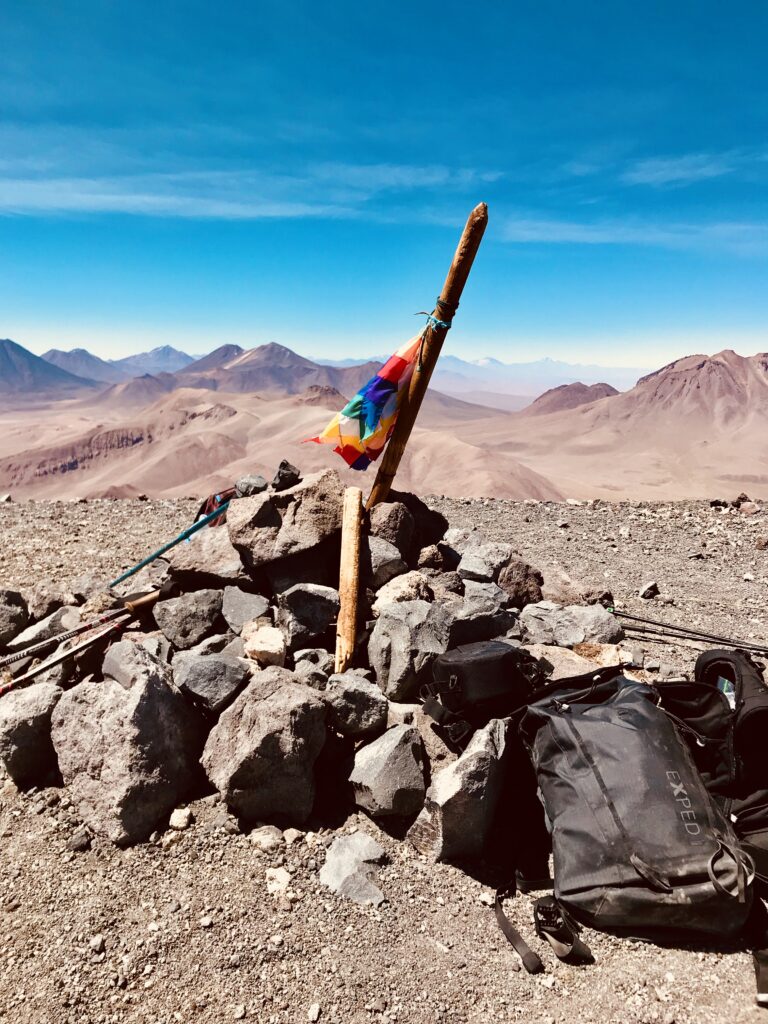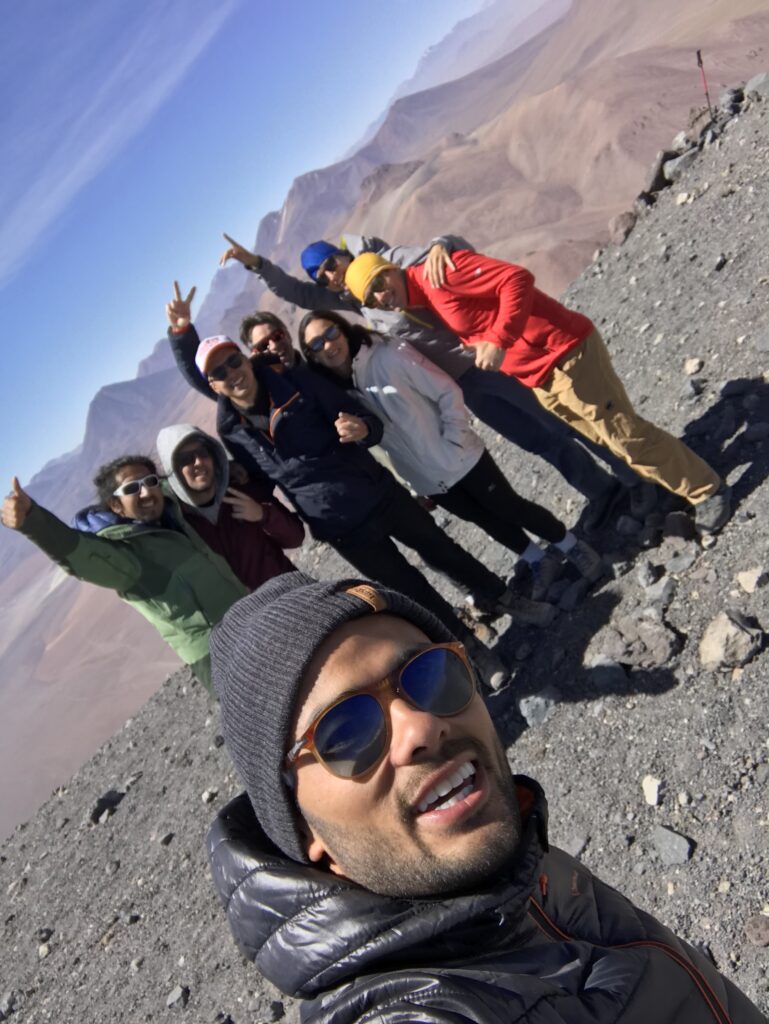It was the last day of the year 2017, two friends and I challenged ourselves to climb an active volcano in the Chilean Andes:
Mission: Climb an active volcano
Volcano: Lascar
Date: December 31st, 2017
Location: Somewhere near San Pedro de Atacama, Chile
Duration: Aprox. 2.5h
Elevation: 5.592m
There are many interesting articles/blogs out on the internet explaining what type of gear should people wear, so I will not go into much details here. The essentials are: winter coat and pants, hiking boots, sunglasses, sun screen, ski poles, water and you can add granola/protein bar to help you with some extra energy.
Additionally, it’s very important to check your health condition before you decide to take this adventure. Although it’s possible for non-professional climbers to reach the summit, at high elevation there are fewer oxygen molecules which affects circulatory system and exercise performance (less oxygen reaches your muscles). Please be cautious.
As cliché as it might sound, preparation is the key to every endeavor. The researches you do prior to your trips, or a chat you have with friends whom have already visited the place you are going next, big chances are they can share some cheaper locations to stay or eat, some cool places they have discovered to fully experience the culture, some hidden places they discovered to take awesome pictures, etc. A time spent on preparation could be an important factor to improve your trip experience to a whole new level. Since you´ve read this far, here it goes a few hints from my experience in case you are considering climbing Lascar volcano.
Hint #1 – Acclimation: Make sure to not climb the volcano on the very first day you have arrived in San Pedro do Atacama. Your body needs at least two days (48h) to adapt to the lower oxygen molecules availability, known as acclimation process.
“A number of changes take place in the body to allow it to operate with decreased oxygen.
- The depth of respiration increases.
- Pressure in pulmonary arteries is increased, “forcing” blood into portions of the lung which are normally not used during sea level breathing.
- The body produces more red blood cells to carry oxygen,
- The body produces more of a particular enzyme that facilitates
- the release of oxygen from hemoglobin to the body tissues”
Source: https://www.princeton.edu/~oa/safety/altitude.html
Now that you know the necessary gear and have your body acclimatized. That’s it, right? Not really. There are 2 more hints I wanted to share: mental preparation and…I will tell you later, stay with me here.
Easier said than done, preparing ourselves mentally for any endeavor is often taken for granted. Assuming you have taken the 48h acclimation in São Pedro do Atacama (Elevation: ~2.200 m) it will still be a challenge on the volcano because the climb initiates at roughly 4.300m elevation, reaching ~5.600m above sea level at the summit. And surely, this next hint will help you face the climbing difficulties mentioned.
Hint #2- Mental Preparation: It will really help if you have a strong motive to reach the summit. Ask yourself why do you want to conquer that volcano, once you found that answer, hold that very strongly and carry that throughout your climb. When initiating your climb, pay very close attention to your body, heart rate feels much more intense, breathe deeply and slowly, walk slowly, respect your body pace, and always remember your why. Step by step you will get there, literally.
Ok, now the third and most important hint…
Hint #3 – Enjoy the experience: Climbing the Lascar volcano was just like experiencing life at its best. There were a lot of difficulties (controlling breathing, managing heart rate, low oxygen intake, slow pace, unstable ground, etc), however the desire to reach that summit was so strong that I accepted the difficulties as an experience.
The beautiful mountains from the Atacama Desert would go as far as a human eyes can see, all that combined with a clear blue sky made a great landscape color match, completing therefore the amazing experience. A astonish sight seen!




When you reach the summit, don’t be shocked if you start crying for “no reason”. In fact, there are a whole lot of reasons: biological and mental difficulties, marvelous sight seen throughout the entire climbing, nature energy and accomplishment. All this together makes your body eliminate tears of pure joy and fulfillment, at least it did to me and our entire group.
What a great way to finish the year. It absolutely was a once in a lifetime experience!

Exploring an active volcano in Nicaragua was a once in a lifetime experience. Being able to work with scientists on their research, climb around on an active volcano, and then sharing what I learned with my K-8 students was an enriching and valuable experience. I was able to check in with my students daily and work with the scientists and other volunteers to answer their questions. I really believe this was a once in a lifetime and unique travel experience. I hope our school can continue our relationship with Earthwatch and also I hope I can return again.
Awesome post! Keep up the great work! 🙂
Great content! Super high-quality! Keep it up! 🙂
https://waterfallmagazine.com
Undeniably believe that which you stated. Your favorite reason appeared to be
on the net the simplest thing to be aware of. I say to you, I
definitely get irked even as folks consider issues
that they plainly don’t know about. You managed
to hit the nail upon the highest and outlined out the
entire thing with no need side-effects , folks can take a signal.
Will likely be again to get more. Thank you